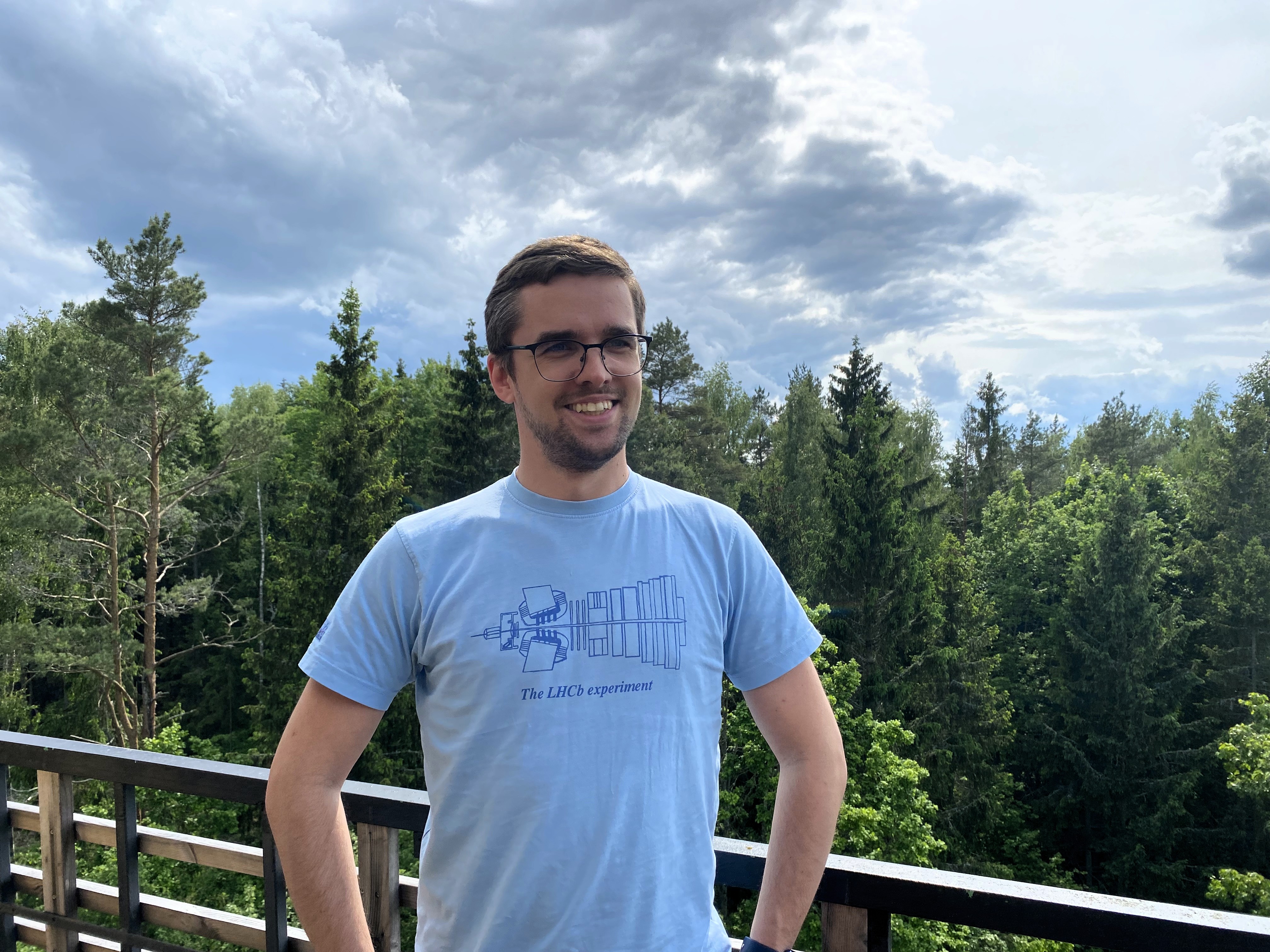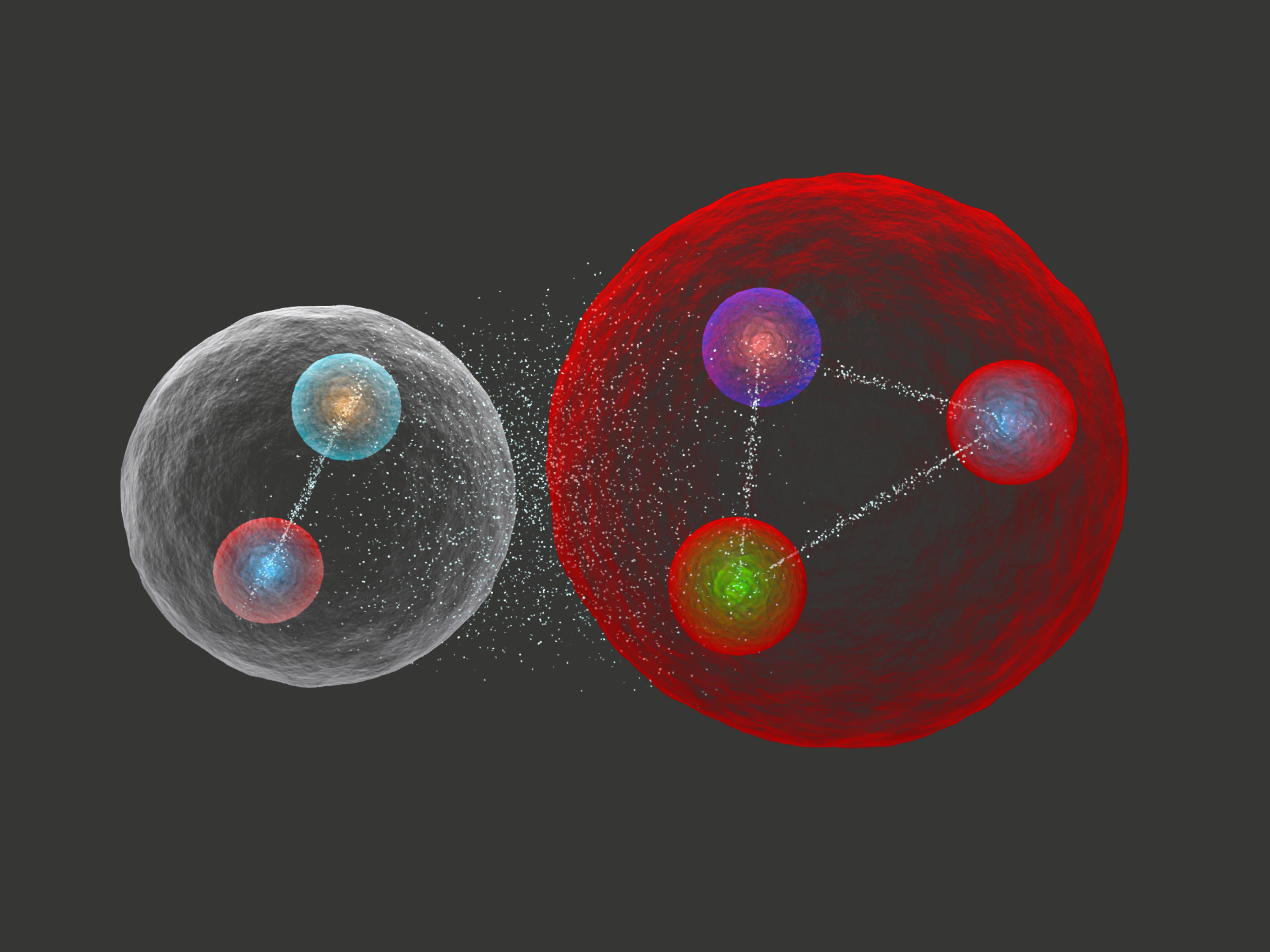VU Physicist Dr Mindaugas Šarpis Receives a Prestigious Grant to Strengthen Lithuania’s Competences in Particle Research

Dr Mindaugas Šarpis, a researcher at the Institute of Photonics and Nanotechnology, Faculty of Physics, Vilnius University (VU), and leader of the LHCb Vilnius group, has been awarded a prestigious ERA Fellowship grant under “Horizon Europe” funding programme for his postdoctoral research. The funding, amounting to almost 200,000 Eur, will strengthen Lithuania’s competences in particle physics and lay the foundations for further research at VU.
Using a novel method, this grant will enable a 2-year research project called PHANTOM (Pentaquark Hunt by Applying Neutral Track Over-constraint Method) to search for particles, specifically pentaquarks.
This funding became possible due to the new EU funds redistribution mechanism, which allows up to 5% of the European Regional Development Fund (ERDF) resources to be directed to the “Horizon Europe” program. Taking advantage of this opportunity, Lithuania allocated 18.5 million euros for the 2024-2025 period, part of which can be used for highly-rated MSCA Postdoctoral Fellowships projects that did not receive funding due to the limited call budget.
The new funding mechanism is one of the EU initiatives aimed at strengthening countries' participation in the “Horizon Europe” program and increasing the success rates of scientific projects.
Benefits of the Grant
The project focuses on sharing one’s knowledge, where the researcher shares his competences acquired abroad with the VU Faculty of Physics, and the university becomes the environment where the researcher can develop his soft skills. According to the researcher, this will encourage the transfer of knowledge from CERN (in French Conseil Européen pour la Recherche Nucléaire) and the LHCb (Large Hadron Collider beauty) experiment infrastructure to VU and the Lithuanian scientific community. It aims to foster collaboration and development, speed up idea generation, and reduce the isolation of scientific knowledge
“This grant is designed to promote the mobility of researchers. In science, it is important not to be stuck in one place – by working in different teams and institutes, researchers gain the experience they need and continuously develop as individuals. After almost 10 years in different foreign universities, I am happy to return to Lithuania and continue my research activities at Vilnius University,” says Dr M. Šarpis.
Lithuania Is Among the Few Countries with This Type of Research
“If we compare a second to the “lifetime” of a pentaquark, that second would be longer than the lifetime of the Universe. Pentaquarks are exotic particles made up of five quarks, unlike the protons and neutrons we are familiar with, which are made up of three. Very little is known about this exotic form of matter, so by studying pentaquarks, we are delving into the very nature of matter and the interactions between particles. Such studies can reveal previously unknown mechanisms of particle interactions, such as formation and decay,” explains Dr M. Šarpis.
The researcher has been analysing particle physics data for more than 10 years and, together with his brother, was the first Lithuanian member of the LHCb collaboration. Dr M. Šarpis says that the detection and study of pentaquarks is extremely difficult, with experimental and theoretical studies being carried out in only a handful of countries, such as Japan, Germany, Italy, the United Kingdom, and now also Lithuania.

Novel Method
At CERN, the probability of a proton colliding to form a pentaquark is less than 1 in tens of millions, and it takes years of data collection with the LHCb detector to build up a dataset that is expected to find at least a few hundred pentaquarks.
“At the LHCb, we use sophisticated algorithms to find over a thousand pentaquarks from quintillions of particles among a huge amount of data. We can now analyse their decay mechanisms and understand how and why they are created.
The method used in PHANTOM allows us to reconstruct the particles into which the pentaquarks can decay from partially reconstructed data. By looking at their spectra, we can find traces of pentaquarks,” explains Dr M. Šarpis.
The physicist recently presented this advanced approach at the “Hadron Physics 2025” conference in Japan. This is one of the largest particle physics conferences in the world, bringing together representatives from various CERN experiments and theoreticians.
CERN, the world’s largest particle physics laboratory, unites scientists from over 100 countries. Located on the border between Switzerland and France, it enables researchers to conduct experiments to understand elementary particles and their interactions better. Particle collisions occurring in the 27-kilometre-long Large Hadron Collider (LHC), situated 100 metres underground, allow scientists to search for new particles and phenomena, helping to unravel more of the Universe’s mysteries. The Large Hadron Collider beauty (LHCb) experiment specialises in investigating the slight differences between matter and antimatter by studying a type of particle called the “beauty quark” or “b quark”.
At CERN, Dr M. Šarpis was responsible for the preparation and technical implementation of the release of the open data set for the LHCb Run1 experiment (2011-2012). In 2024, Lithuania became an Associate Member of CERN.